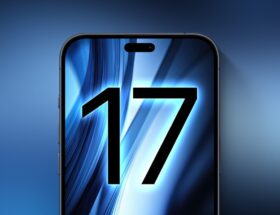
The AirPods 4 are here, and they’re amazing. As a pair of wireless over-ear headphones, they’re really hard to fault. I’ve been using AirPods 2 for the past five years — skipping the third-generation model due to fit issues — and the AirPods 4 are what I’ve been waiting for.
The new AirPods come in two models: $129, or $179 with active noise cancellation. I have the ANC headphones and love them, but I predict even the base model will drive big sales this holiday season.
Looking at the entire AirPods lineup, the AirPods Pro are clearly still the king. The silicone tips fit perfectly in your ear, which provides the best conditions for sound quality and noise cancellation. However, I never felt comfortable using the AirPods Pro or most in-ear headphones. The pressure of the silicone tips inside my ear was never comfortable.
While the Pros will always win in sound quality and feature set, the style of the tips will mean that they will always be out of reach for me. I accepted this ergonomic compromise and decided that I would always be on the worse side in terms of pure functionality.
Noise Cancellation
While that remains true, the AirPods 4 are closer to the Pro than ever before. Go back a year and if someone told me that Apple’s standard earbuds would support active noise cancellation, I’d have told you they were crazy. And yet, AirPods with ANC are here, and they’re surprisingly good.
I’ve been using the AirPods 4 for the past three days, and I’m amazed at how much sound these earbuds can isolate and cancel out. In most cases, some sound is still audible in noise-canceling mode, but the volume is significantly reduced.
My gaming PC has three large fans under my desk that keep the GPU cool. In a quiet room, you can hear them running constantly. With the AirPods in my ears and ANC enabled, I couldn’t tell for sure if the PC was on without looking at the status LED on the case. They are also effective at suppressing the low hum and whir of my office desk fan.
I had similar success when testing the ANC outside. As I walk down the street, my footsteps become quieter, other people's conversations become barely audible, and the noise of a plane flying overhead is almost completely drowned out.
Even the roar of a passing car's engine is surprisingly well dampened. I couldn't believe it. I would turn off the ANC to confirm that, yes, engine noise is usually overwhelmingly loud as they rush past. With the ANC on, the noise is muted so much that it's almost like the sound of grains of rice being poured into a bowl. When playing music at a normal, comfortable volume, all but the loudest ambient noises become virtually inaudible with the ANC on.
Some sounds, especially sharp or higher-pitched ones, will break through the AirPods 4’s ANC system. Heavy rain was quieter, but only slightly. The drone of a passing helicopter was also quite loud. It’s in situations like these that the Pros can perform better, taking advantage of the passive cancellation and isolation provided by their physical seals.
When ANC is active, I feel a sense of pressure in my inner ear. You may also notice occasional noise-canceling artifacts in the AirPods 4’s rendering, like a constant breeze or a whistling sensation. This is likely because Apple has to push the algorithms really hard to compensate for their open-to-the-world headphone design.
I don’t think I’ll keep ANC (or Adaptive Mode) on my AirPods all the time, as I like to hear the world around me. But situationally, it’s a great feature. One of the motivating reasons for upgrading was to use ANC while I’m mowing my lawn. With the old AirPods, I had to play music or a podcast at 100% volume to hear it over the noise of the lawn mower. With the AirPods 4, I can long-press the stem to turn on ANC in a pinch, and still mow and enjoy whatever I’m listening to in comfort. The noise cancellation doesn’t completely eliminate the sound of the lawn mower, but it does muffle it enough that I can listen to my podcast without going above 30% volume.That said, I find Transparency mode redundant on the AirPods 4. I can hear just fine even with all noise-canceling modes turned off. Out of the box, pressing the force sensor on the stem toggles between noise-canceling and transparency modes. I changed it in the settings to toggle between noise-canceling and off. I don’t get much use out of Transparency mode, and I assume not having noise-canceling on saves battery life.
Sound Quality and Fit
Left: AirPods 2. Right: AirPods 4.
In terms of sound quality, I think the AirPods 4 are noticeably better than the AirPods 2 and slightly better than the AirPods 3. Everything sounds balanced and clear, with a little more bass than you’d expect given the tiny size of the drivers. (Of course, the encapsulated Pros will still have better sound, since with them no frequencies can leave your ear canal.)
I know some people hate this, but I love listening to spatial songs from Apple Music through AirPods 4. You get a really convincing sense of immersion in the music. If you only tried Spatial Audio when it first came out, I’d give it another try. Artists are getting better at mastering versions of Dolby Atmos, and Apple’s firmware improvements have helped improve the quality of the effect. For listening to music, use the fixed spatial mode rather than Head Tracking.
Apple claims that AirPods 4 have an all-new acoustic architecture that delivers better audio performance. That may be true, but I think users upgrading from AirPods 3 may find that the biggest jump in sound quality comes from the better fit achieved by the 4’s redesigned shape, which prevents sound from leaking.
The AirPods 1 and (similarly designed) AirPods 2 fit my ears very well. They feel lightweight, don’t press into the side of my ear canal, and don’t fall out. Much of the original design’s weight came from the long stems that extend beyond the ear. The AirPods’ popularity from the start speaks to how universally compatible this design was.
The AirPods 3 design was more controversial in terms of fit. I know a lot of people who skipped the 3rd version entirely because they found that they just didn’t stay in their ears, despite having no issues with previous generations. The AirPods 3 design is much more aggressively convex and feels “large” inside the ear. For me, the AirPods 3 stayed in my ear, but they were much less secure. They would fall out when I was having an intense conversation or yawning. I wasn't sure about them, so I settled on the AirPods 2.
The AirPods 4's design is a cross between the AirPods 2 and AirPods 3. They have the same short stems as the AirPods 3, but the earpieces are significantly shorter, so they feel less round and bloated, and (for lack of a better description) a little more sculpted to follow the shape of your ear holes.
Fit is always a personal preference, but I’d say the AirPods 4 are almost as comfortable to wear as the original AirPods. I’d encourage potential AirPods buyers who were put off by the 3rd model’s shape to give this new generation another try. Speaking for myself, I’m now confident that the AirPods 4 won’t fall out of my ears during normal use. I tested them this weekend by walking, going for a 15-minute run, and doing my best to simulate in-situ headbanging. Not only will they not fall out, they feel reassuringly like they won’t.
Value for money
With all these improvements, I think Apple could get away with raising the price of the AirPods 4, especially the active noise-cancelling version. But they didn't. In fact, the prices stayed the same or went down, just like before. That means the new AirPods 4 lineup is better value for money than ever.
Just last month, Apple was selling AirPods 2 for $129. For that money, you got the earbuds themselves and a wired-only Lightning charging case. Now, for $129, you get the base model AirPods 4 with a USB-C charging case. That's a step up in features by two generations: You get a smaller, modern charging case that holds more power; the latest Spatial Audio and force sensors; computational audio features like Voice Isolation for better microphone recording quality and Adaptive EQ for better sound quality; the latest H2 chip with support for new head gestures; and more.
And for $179, you now get AirPods 4 with active noise cancellation, whereas before the same money got you AirPods 3 with no noise cancellation at all, plus a Lightning port/wireless charging case in tow. Beyond everything else that’s new, I appreciate the smaller, more compact charging case you get with the AirPods 4. It even has a built-in speaker to help you find it when it inevitably gets lost. But keep in mind that the case is now so small that it can’t contain the necessary ring of magnets to attach to MagSafe chargers. It will still charge if it can stay in place, but it will easily slide off a vertical charging pad, for example.
This is the best AirPods lineup ever (let’s pretend the AirPods Max doesn’t exist, please). If you can stand the feel of the earbuds, the AirPods Pro 2 are still the recommended model, especially since they’re currently on sale online.
But if you’re like me and will never settle for silicone earbuds, the AirPods 4 with Active Noise Cancellation are a solid buy. If you’re price-sensitive or don’t care about ANC, the basic AirPods 4 are also a great buy.
In the past, you could make a case for choosing truly wireless earbuds from other brands that sell for a little less than what Apple charges for AirPods. But AirPods are great, and going elsewhere meant losing all the exclusive ecosystem integration features. That’s still true, but now you have another reason to justify the expense. The AirPods 4’s Active Noise Cancellation actually works, and it’s not just marketing hype. I just don't know of any other over-ear headphones that can offer the same level of noise cancellation in an over-ear form factor. That's what really sets the AirPods 4 apart.










